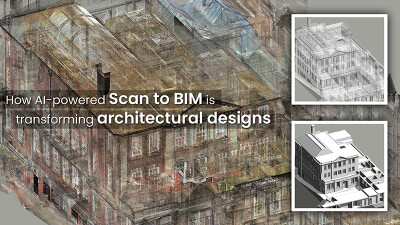Last week’s 5th International Visualization in Transportation Symposium and Workshop in Denver, CO featured two sessions dedicated to 3D laser scanning moderated by Spar Point’s Bruce Jenkins. The first kicked off with Dr. John Kemeny, University of Arizona, Tucson, detailing how laser scanning benefits rock mass characterization.
Laurence Rohter, P.E., Illinois Institute of Technology, described using ground-based rotating LiDAR to document and measure rail tunnels and trackside structures.
Michael F. Trentacoste, P.E., director of the Federal Highway Administration‘s Office of Safety Research and Development, Turner Fairbank Highway Research Center, McLean, VA, presented his organization’s work to develop a “Digital Highway Measurement” system – an automobile-mounted unit incorporating multiple sensors including a laser scanner, stereoscopic video and ground-penetrating radar to capture the presence, location and health of highway-related assets. (Trentacoste will present an update on this work at SPAR 2007: Capturing and Documenting Existing-Conditions Data for Design, Construction and Operations, March 26-27, Houston, TX.)
In a panel session on advances in surveying and remote sensing, Jim Flint, P.E., vice president, Bohannan Huston, Inc., Albuquerque, NM, showed how laser scanning can make for more persuasive visual presentations to clients and other stakeholders, and improve engineering efficiency.
Paul Mrstik, vice president, engineering, Terrapoint, Ottawa, ON, updated attendees on his company’s work developing mobile ground-based LiDAR (details in our last issue).
The conference was organized by the Transportation Research Board‘s Visualization in Transportation Committee chaired by Michael Manore, P.E.





